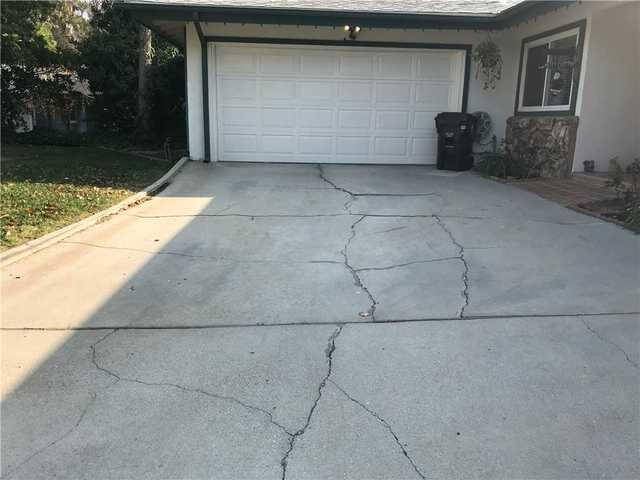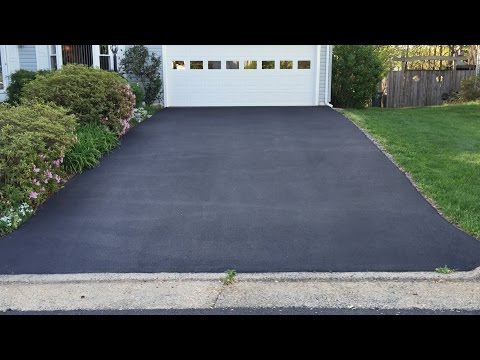An asphalt driveway with multiple cracks and potholes is not only an unattractive eyesore facing you and your neighbors each day, it also lowers the curb appeal and property value of your home as well. It needs to be fixed. The question becomes, do you resurface/repave it, or do you dig it up and replace it.
The difference between the two processes can vary significantly in both time and money. Understanding the differences, and identifying the possible causes for your driveway’s condition, will allow you to make an informed decision on which way to go.

Resurfacing is Not Always the Quick Fix You Think It Is
Resurfacing is the “middle ground” in asphalt driveway repair. Small (less than ¼ inch wide) cracks can be repaired using an asphalt filler available at most home improvement stores. This is a DIY project and the better you stay on top of these small cracks, the longer it will be before you need resurfacing or replacement.
But life happens and filling becomes a low priority. The small cracks grow and suddenly you have a third of your drive looking like a spiderweb. When your driveway looks like shattered glass, it’s too late for DIY fixes.
Resurfacing is basically placing a layer of new asphalt over the existing drive. That sounds easy but it’s more involved. Or at least it is for a professional asphalt paving contractor like Standard Paving.
Just paving over bad asphalt is not the answer if you are looking for long-term results. If the damage to your existing drive is caused by more than simple cracking, a new layer of asphalt will mimic the conditions of the original drive. In short, the original drive needs to be repaired before it is resurfaced.
We’ll carefully inspect your drive and if we believe it’s a good candidate for resurfacing, we’ll prep your existing drive so the new layer of smooth, slate black asphalt perfectly binds and gives you years of excellent service.
We fill cracks and potholes, locate and remove failed asphalt, level up low spaces, and then thoroughly clean the drive. A self-leveling paver puts the asphalt down, our technicians smooth it out, and we finish with a roller compressing the new layer to the old.

Replacing an Asphalt Driveway
Digging up and replacing your driveway is obviously the extreme end of asphalt driveway maintenance. There are a number of reasons why a drive should be replaced but the most common are:
- Age. The typical service life for an asphalt drive is 20 to 30 years. If your drive is in that range or nearing it, replacement is the only viable solution.
- Failing Subbase. Your drive sits on top of a subbase consisting of 6 to 9 inches of gravel. If that base is worn down, or portions washed away by poor drainage, then it can’t properly support the asphalt driveway above. It will cause cracks, low spots or a wavy surface, and promote structural failure of the asphalt.
- Substandard Materials or Construction. Contractors looking to take shortcuts, take them in the preparation of the subbase. Low grade or inappropriate fill is used for the subbase. Obvious drainage issues are ignored. Promised depth of asphalt is not delivered.
At Standard Paving, our experienced estimator will spend the time to ensure all your questions are answered regarding resurfacing and replacement. If he suggests replacement, and you agree, we will break up and remove your old asphalt, dig out your old subbase, regrade the drive ensuring a slope directed at the street, restore the subbase with quality material, and then pave your new drive.
Obviously, replacing is not repairing to make a drive “good as new.” Repaving is “new” and you can look forward to 20 to 30 years of service.
